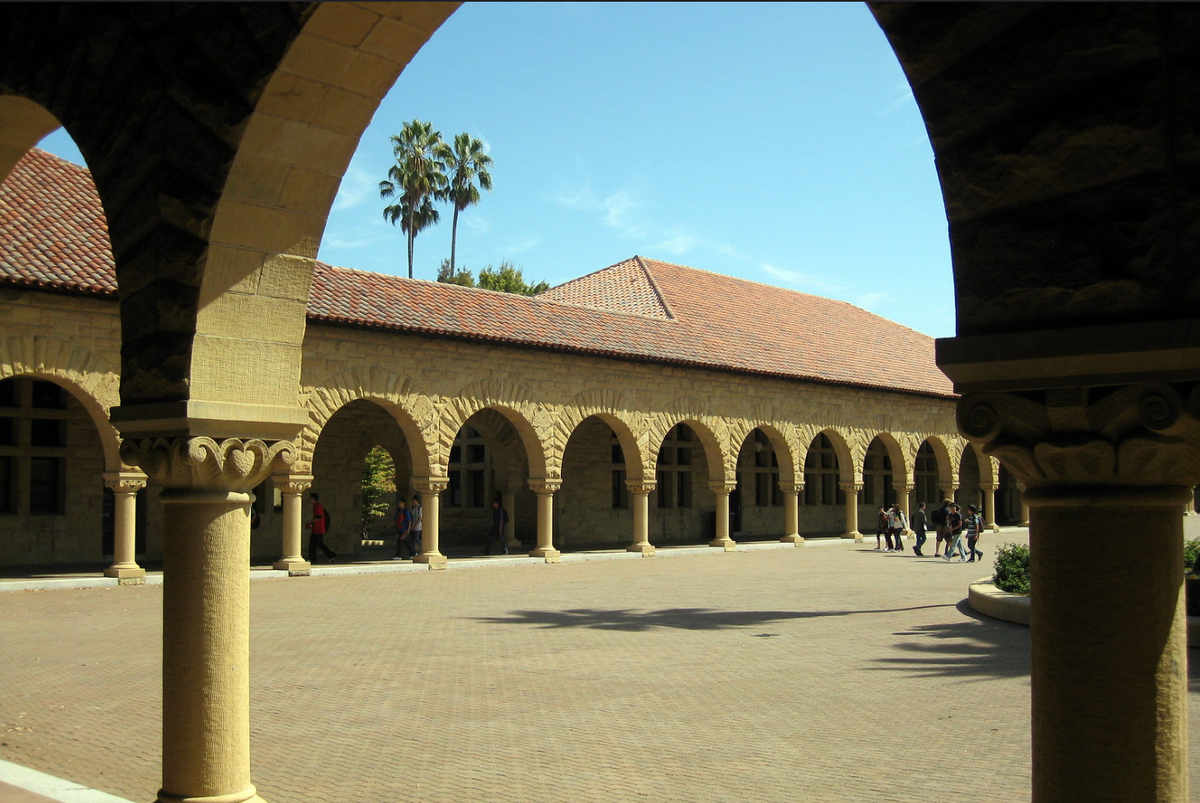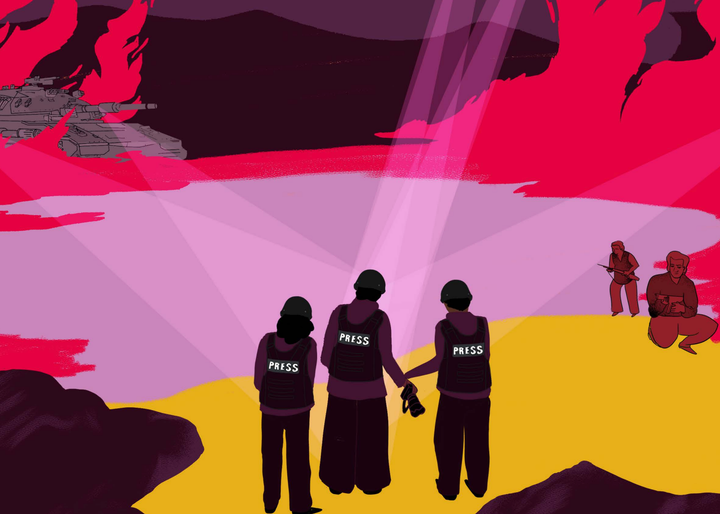Stanford Newspaper Reporter Arrested While Covering Demonstration Against Israel's War On Gaza

The following article was made possible by paid subscribers of The Dissenter. Become a subscriber with this special offer and support independent journalism on press freedom.
A reporter for Stanford University’s student newspaper The Daily was arrested and “falsely imprisoned on $20,000 bail” in violation of their rights, according to the publication.
On June 5, several Stanford students engaged in an act of civil disobedience and occupied President Richard Saller’s office at 5:30 a.m. Students demanded that the university divest from any companies “that provide material and logistical support to Israel’s current military campaign” in Gaza.
Students also called on university administrators to drop the charges against those who had engaged in activism against the Israeli government’s war on Gaza. They refused to leave until their demands were met.
As The Daily reported, police responded a couple of hours later. Twelve students were arrested, along with one of the newspaper’s reporters, who had a press pass and wore “Stanford Daily attire.” They were taken to Santa Clara County Jail.
Stanford administrators quickly announced that all the students arrested were suspended, and if any of the students were seniors, they would be denied graduation. The university shut down all peaceful encampments on campus (including a pro-Israel vigil)—effectively retaliating against the entire student body by curtailing their freedom of assembly.
The reporting from The Daily formed the basis for national and international news media coverage. Yet a day later, the newspaper’s arrested reporter, who was not a participant in the action, is still facing charges. (It is unclear if they were released from jail.)
Editors for the university’s newspaper condemned the actions of police and university administrators, who violated their reporter’s First and Fourth Amendment rights.
“The Daily received advance notice of the protest around midnight on June 4, but without details on its location or nature,” the editors recalled. “Organizers told reporters to meet them at a central location before a protest they described as likely to lead to arrests.”
“Two reporters received permission from editors to cover the demonstration, and were actively communicating with editors prior to and during the protest. Editors explicitly instructed our reporter to comply with any instructions from police officers.”
“Police entered the building shortly after 8 a.m. and arrested protesters, as well as the Daily reporter, who told arresting officers he was in the building to report on the protest and displayed his press pass,” the editors added.
Ashanti Blaize-Hopkins, the president of the Society of Professional Journalists (SPJ), said the arrest was “completely unacceptable.” She pointed out that California law requires that police allow journalists to “cover instance of civil unrest without interference. This includes journalists working for campus media outlets.”
The arrest of The Daily’s reporter is part of a troubling pattern in the state of California, which Freedom of the Press Foundation deputy advocacy director Caitlin Vogus outlined back in May.
“On May 6, 2024, police arrested independent videographer Sean Beckner-Carmitchel as he was filming the detention of protesters on the University of California, Los Angeles, campus.”
“Just days earlier,” Vogus recounted, “police threatened reporters at the Daily Bruin student newspaper with arrest while they were covering the UCLA encampment and denied them access to areas where protests were occurring.”
At Cal Poly Humboldt, a reporter named Adelmi Ruiz was livestreaming when police detained her for "interfering with a crime scene." She told police that she was press, and it was her job to cover the police response to the protest. "Find a different job if this causes you to break the law," an officer replied.
The Associated Press reported on May 2 that more than 2,000 people who engaged in antiwar demonstrations on college or university campuses have been arrested.
No one would dispute that reporting on nationwide student protests is newsworthy. However, dozens of reporters have experienced incidents, where they were arrested, detained, or threatened with arrest.
Student reporters, who are training to become journalists, have bore the brunt of crackdowns on media access to protests or civil disobedience actions. Sometimes administrators have denied students access to press briefings while simultaneously welcoming local news reporters interested in updates on campus protests.
There was a second reporter for The Daily, who was arrested. She apparently was a news managing editor for the publication, and they were not present to report for the newspaper. Editors promised to discipline her for failing to disclose her plans to participate in the action.
One day after police and university administrators arrested students and cleared the university’s encampment against the war on Gaza, the Israeli military launched an attack on a school run by the United Nations Relief and Works Agency (UNRWA).
At least 40 people, many of them women and children, were killed. The school was a shelter for Palestinians displaced by the war, and Al Jazeera English reported that part of the weapon used was manufactured in the U.S. by Honeywell.
The New York Times also published a report on Sde Teiman base that added to the body of evidence that the Israeli military has been systematically torturing Palestinian detainees.




Comments ()